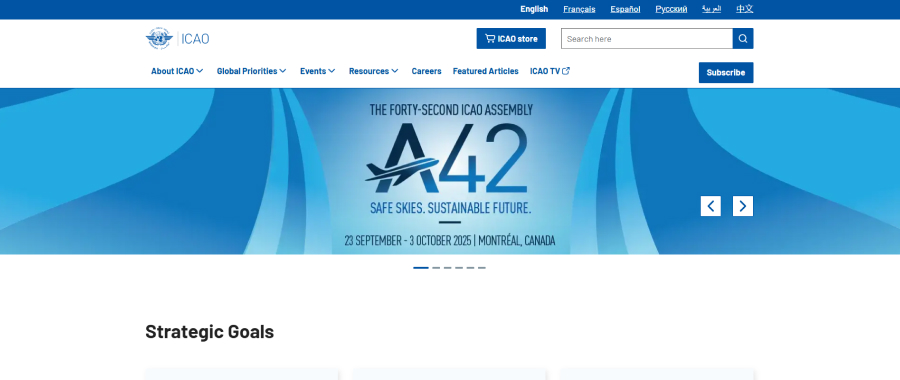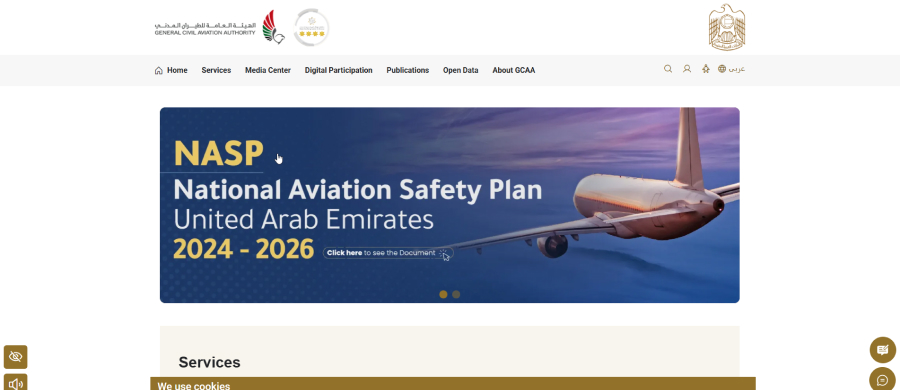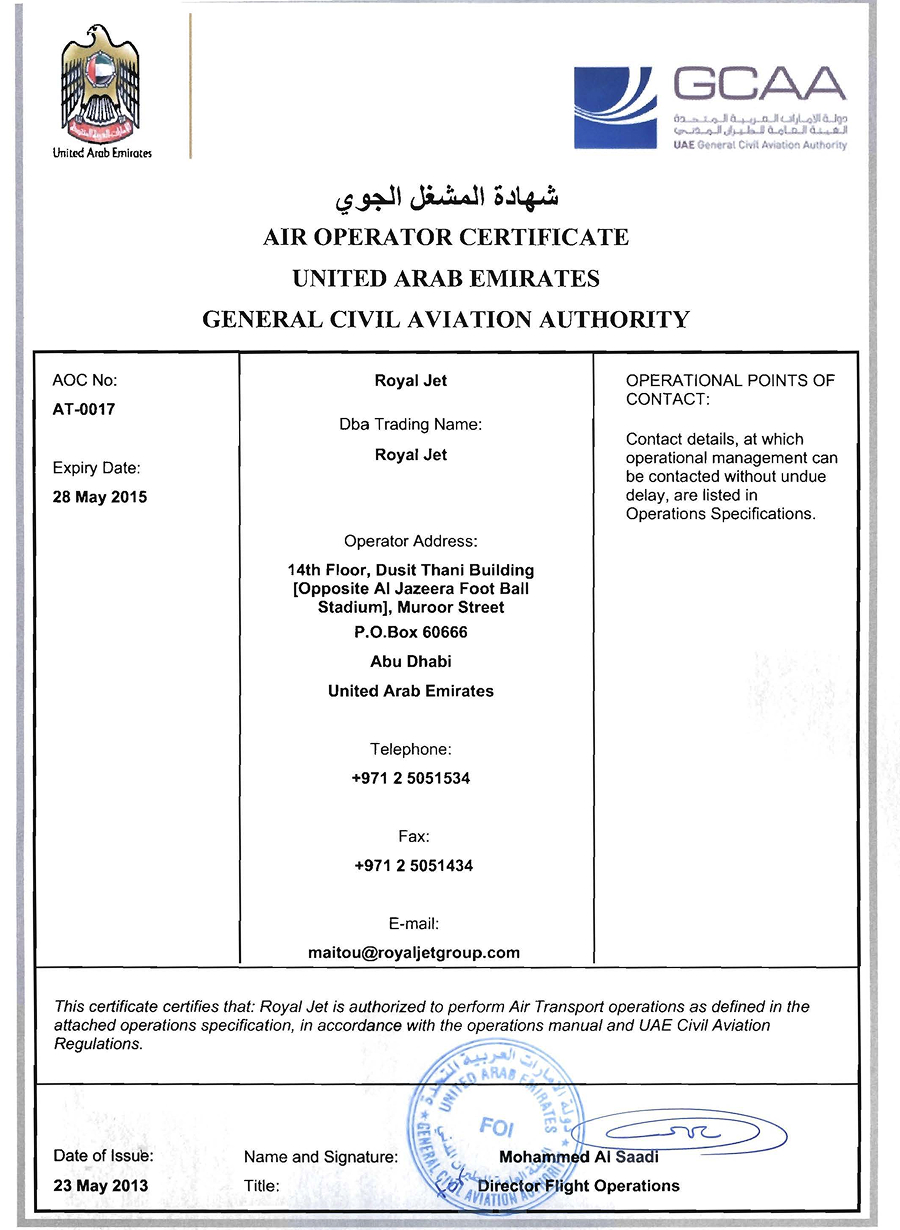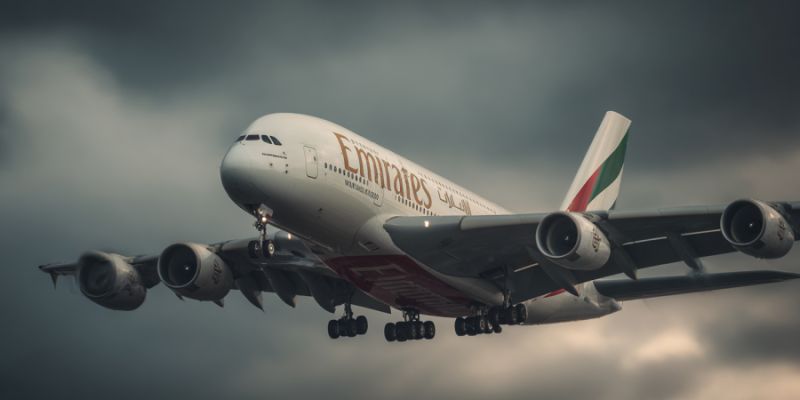Last years, there has been a tangible increase in interest in private and corporate aircraft ownership in the UAE. Whether they are business representatives, VIP clients or international investors, for many, registering an aircraft in the UAE is not just a prestigious move. It is a logical element of a strategy to optimise costs, comply with regulations and increase operational flexibility.
In reality, aircraft registration in the UAE goes far beyond filling out a few forms. Owners and operators face a combination of legal, financial, technical, and regulatory steps that require careful preparation and a clear understanding of how local authorities work. This guide takes you through the entire process, from choosing the right ownership model and preparing the necessary documents to meeting GCAA requirements, securing compliance approvals, and estimating timelines and costs. Along the way, we will also look at practical examples that reflect what business owners and their advisors encounter in practice.
Legal framework and regulatory bodies
Aircraft registration in the UAE is governed by a clearly structured system of regulations and oversight bodies that ensure transparency and compliance with international standards. Unlike many offshore registries, where the emphasis is on simplifying formalities, Emirates places a key emphasis on safety and compliance with ICAO (International Civil Aviation Organisation) standards. This explains why aircraft registration in the UAE is perceived not only as a convenient ownership tool, but also as an element of reputational positioning.

The central authority is the GCAA (General Civil Aviation Authority), which is responsible for certification, oversight, and licensing of aircraft at the federal level. It is the GCAA that maintains the UAE State Register of Civil Aircraft, assigning unique registration numbers (prefix A6-). Its tasks include reviewing applications, verifying submitted documents, organising technical inspections and issuing airworthiness certificates. GCAA also issues manuals and advisory materials - in particular, CAAP 58, which details the requirements for registration and the list of mandatory documents.
In addition to the federal authority, the DCAA plays a significant role. The authority is responsible for controlling and regulating activities in the Emirate of Dubai, especially the operation of aircraft within the city's territory and airports. In practice, this means that owners basing aircraft in Dubai interact with two levels of regulation at once - federal and local.
The legal framework includes several main elements:
- The UAE Civil Aviation Law, which contains the general rules.
- GCAA bylaws and circulars.
- Manuals (e.g. CAAP 58), which act as a practical guide for lawyers and owners.
It should be borne in mind that the registration of an aircraft in the UAE is closely linked to ownership structure issues. For example, if the aircraft is owned by a foreign investor, it often requires the establishment of a local company or the use of a specialised legal vehicle (SPV). These issues are directly regulated by the GCAA and non-compliance may result in the refusal of registration.

Thus, the legal framework in the UAE is based on a combination of international standards and national specifics. Its key objective is to ensure flight safety, transparency of ownership and integration of the Emirates into the global civil aviation system.
Who to register an aircraft in the UAE
The ownership and registration of an aircraft in the UAE directly depends on the status of the owner and the form of business organisation. The country's aviation legislation is structured in such a way as to ensure transparency of ownership and exclude situations where aircraft are operated without control or under fictitious structures.
Aircraft registration in the UAE is possible for:
- UAE nationals - no restrictions;
- residents of the country who have a residence permit and a confirmed source of income;
- in exceptional cases - for foreign nationals if they own the aircraft through a company registered in the Emirates.
Thus, non-residents cannot directly issue a registration in their own name: a legal shell within the country is required.
Legislation allows aircraft to be registered in the name of companies registered:
- in the UAE mainland;
- in free economic zones (free zones).
For companies involved in international operations, it is important to structure ownership correctly to avoid problems with tax authorities and double taxation. In some cases, the registration can be formalised behind the leasing company or the bank financing the purchase, transferring the right of use to the operator.
The choice of structure takes into account not only aviation requirements, but also insurance, inheritance and international law.
That is why in practice aircraft registration in the UAE rarely takes place without the involvement of aviation lawyers: it is necessary to balance the requirements of the GCAA, the interests of the investor and the convenience of further operation.
In general, the UAE legislation creates a rather flexible regime: both local residents and foreign investors can act as owners, provided that the legal registration is correct. This approach makes the Emirates an attractive jurisdiction for international owners of business jets and corporate fleets.

Want to learn more about UAE business setup services?
Technical requirements and aviation safety in the UAE
It is impossible to register an aircraft in the UAE without strict compliance with airworthiness and safety standards. The General Civil Aviation Authority (GCAA) prioritises this aspect: even perfectly executed documents will fail if the aircraft does not meet the technical requirements.
The Certificate of Airworthiness is the basis for the admission of an aircraft to the register. It confirms that the aircraft has been technically inspected and meets the operational requirements. Without this document, registration is not possible. To obtain it, the GCAA appoints an inspection, which checks key parameters: condition of the engines and airframe, navigation and communication systems, and compliance with the requirements for rescue equipment.
The UAE is guided by ICAO standards and also takes into account the practices of EASA and FAA. This means that aircraft previously operated in Europe or the USA are usually easier to adapt to Emirates' requirements. Nevertheless, in some cases, additional equipment or modernisation may be required.
The owner is required to provide a package of documents confirming the aircraft's history:
- maintenance logs;
- records of previous registrations;
- records of repairs and modifications;
- certificates of conformity with established standards.
All documents must be up-to-date and, if necessary, translated into English.
Obtaining a certificate of registration is only the first step. Thereafter, the aircraft must undergo regular inspections, such as annual inspections to confirm airworthiness, unscheduled inspections in the event of a change of ownership or prolonged downtime, and technical condition audits in case of suspected breaches of regulations.
Failure to comply with at least one requirement results in suspension of the registration procedure or refusal to renew it. For owners, this means downtime, additional costs and reputational risks. This is why many owners engage certified maintenance repair centres (MROs) even before submitting an application.
Thus, technical requirements for aircraft in the UAE act not as a formality, but as a guarantee of safety and compliance with international aviation practices. They make registration more complex than offshore registries, but increase confidence in the jurisdiction and the status of its owners in the global aviation market.
Step-by-step registration procedure
The process of registering an aircraft in the UAE is systematic and transparent, but requires careful preparation. Every action is consistently checked by the aviation authorities, and even minor errors can delay the procedure for weeks.
Step 1. Preliminary preparation
The first step is to verify the ownership and legal status of the future owner.
- Determining the ownership structure: direct ownership (for residents) or through a legal entity (SPV, company in free zone).
- Financial obligations: in case of purchase with the involvement of a bank or leasing company, the documents are issued to the lender and the operator is given the right of use.
- Legal review of the purchase agreement: it must be drawn up in accordance with local legislation and international practice.
At this stage, technical documents, the aircraft's history and compliance with ICAO standards are also checked.
Step 2. Preparing the application package
An extensive package of paperwork is required to apply to the GCAA:
- owner's passport or company registration documents;
- statutory documents of the founder (if registering through a legal entity);
- contract of sale, lease or other legal title;
- airworthiness certificate;
- aircraft technical passport;
- maintenance logbooks.
If the aeroplane was purchased abroad, it is necessary to attach the documents of removal from the previous register. All documents must be in English or translated and notarised.
Step 3. Submitting an application to the GCAA
The application is submitted electronically or in paper form through the GCAA system. It is accompanied by all documents and a receipt for the payment of the state duty. At this stage, additional background checks are possible, in particular - confirmation of funding sources (within the framework of AML/KYC rules).
Step 4. Temporary certificate of registration
After the initial document check, the GCAA may issue a provisional registration certificate. This allows the aircraft to be prepared for operation and inspection, but does not authorise full commercial flights.
Step 5. Aircraft inspection
The next stage is the technical inspection. It is carried out by GCAA. The inspection covers the technical condition of the aircraft, including airframe, engines and safety systems. If any discrepancies are found, the owner is given a period of time to rectify them.
Step 6. Issuance of a permanent certificate
Upon successful completion of the inspection, the GCAA assigns the aircraft a unique registration number (prefixed A6-XXX) and issues a Certificate of Registration. This document confirms the legality of the aircraft's operation under the UAE flag.
Step 7. Additional steps
In some cases, registration requires the fulfilment of related procedures:
- obtaining flight permits (Air Operator Certificate if the aircraft is used for commercial purposes);
- obtaining insurance according to UAE standards;
- registration of crew and technical personnel in the relevant systems.

Thus, registering an aircraft in the UAE is a sequence of steps where each element (documents, inspection, ownership structure) is crucial. The system is designed to combine investor convenience and high standards of aviation safety.
Additional costs and services
Aircraft registration in the UAE comes with both time and financial costs. Although the procedure itself is quite transparent, it is important for the owner to understand all categories of costs and time frames in advance to avoid unpleasant surprises.
The whole process usually takes between two and six weeks: the initial document check takes up to a week, the technical inspection takes about ten days, and the issuance of the permanent certificate takes place within a week. If additional modifications are required, the timeframe may increase.
State fees are regulated by the GCAA and may vary depending on the type and weight of the aircraft. In general terms:
- a registration fee for entering the aircraft on the UAE register;
- fees for reviewing documents and issuing a certificate;
- fees for inspections and auditing of technical documentation.
For light private aircraft, the amounts will be moderate, while business jets and large aircraft are subject to significantly higher fees.
In addition to state fees, the owner must consider the associated costs:
- legal and aviation consultant services - transaction support, property structuring, regulatory approvals;
- technical inspections and retrofitting - elimination of identified discrepancies or installation of additional equipment;
- notary translations and legalisation of documents;
- insurance - a policy is a prerequisite for operation.
Thus, the costs of aircraft registration in the UAE cannot be called minimal, but they are compensated by prestige, reliability and the opportunity to use the country as a world-class aviation hub.
Alternative regimes and special cases in the UAE aircraft registration
It is not always the case that aircraft owners require classic long term registration. The UAE has mechanisms in place to tailor the process to different operational scenarios. One such option is temporary registration. It is used when the aircraft needs to be operated for a limited period of time, for example, while waiting for the completion of a sale or when planning a charter programme for the season. This regime allows the aircraft to be used legally, but imposes certain restrictions: the validity of the certificate is limited and the possibilities of commercial operation are reduced compared to permanent registration.
A significant difference in legal regulation is the distinction between private and commercial registration. If the owner uses the aircraft for private flights in the UAE, the procedure is simplified and licensing requirements are less stringent. Commercial operation, on the other side, requires a more comprehensive licence package, including an Air Operator Certificate. This entails additional checks related to safety, crew qualification and technical readiness.
There are also special cases where registration is done through leasing companies or banks. In such situations, the financial organisation is the legal owner, and the operator receives the right of use. This solution is in demand when the purchase is financed by credit structures, which is especially relevant for expensive business jets.
Thus, registration of the aircraft in the UAE is not limited to a single scenario. The system provides flexible regimes that allow the procedure to be tailored to the purpose and status of the owner, be it short-term operation, personal flights or commercial activity. It is this versatility that makes Emirates attractive to both private investors and corporate entities considering the country as a strategic aviation centre.
Practical aspects and pitfalls
At first glance, the procedure for registering an aircraft in the UAE looks fairly straightforward, but in practice owners encounter a number of difficulties that are not always obvious at the planning stage. One of the common problems is an incomplete or incorrectly executed package of documents. Even a small inaccuracy - a missing notarised translation, an unconfirmed sales contract or an outdated airworthiness certificate - can lead to delays and sometimes even a refusal to register.
Another high risk is choosing an unsuitable ownership structure. If a foreign investor attempts to register an aircraft in the UAE directly to itself, ignoring the requirement to set up a local legal entity, the process will be halted. In such cases, the ownership scheme has to be urgently restructured, which entails additional costs and loss of time.
Special attention should be paid to the technical side. Even aircraft previously operated in Europe or the USA and complying with EASA or FAA standards sometimes require additional retrofitting to bring them into compliance with GCAA standards. This may involve navigation equipment, safety systems or emergency equipment. Often these upgrades cost significant sums of money and are best anticipated in advance.
The financial component also becomes a source of difficulties. In addition to official fees, the owner has to pay for consultants, insurance, maintenance and notary fees. Without a preliminary budget calculation, it is easy to face an unexpected increase in the cost of the project.
Conclusion
Registering an aircraft in the UAE is a multi-layered process that combines legal, technical and financial aspects. Unlike offshore jurisdictions, where registration is often reduced to a mere formality, in the Emirates the procedure is aimed at ensuring maximum transparency and security. That is why an aircraft registered in the UAE is perceived in international practice as a sign of trust and the owner's serious approach to operation.
The advantages are obvious: a high level of regulation, integration into the global ICAO system, the prestige of using the national registration prefix A6 and access to one of the most developed aviation infrastructures in the world. For private owners it is an opportunity to operate aircraft safely and legally, and for corporate entities it is a tool that raises their status and simplifies interaction with international banks, leasing companies and operators.
However, along with the available advantages, registration also comes with certain obligations. Owners need to take into account strict technical standards, prepare an extensive package of documents and carefully select the ownership structure. Mistakes at any stage can lead to delays and additional payment.
Therefore, competent preparation remains a key success factor. Timely involvement of consultants and lawyers allows not only to speed up the process, but also to avoid pitfalls that often become an obstacle for newcomers to the aviation sector.
Registration is available not only to Emirati citizens. Local residents with a valid residence permit and proven income are also entitled to register an aircraft for themselves. For foreign investors, the way is usually to set up a company or SPV in one of the free zones or on the mainland to comply with GCAA requirements.
Usually the process takes 2-6 weeks. The initial check of documents takes a few working days, technical inspection takes about ten. If the aircraft has discrepancies or requires additional equipment, the timeframe increases. With a properly assembled package of documents, the registration process is much faster.
In addition to the mandatory fees for registration and issuance of the airworthiness certificate, you need to budget for insurance and legal fees. For business jets, the amounts are higher than for light aircraft. It is important to prepare a detailed project estimate in advance.
